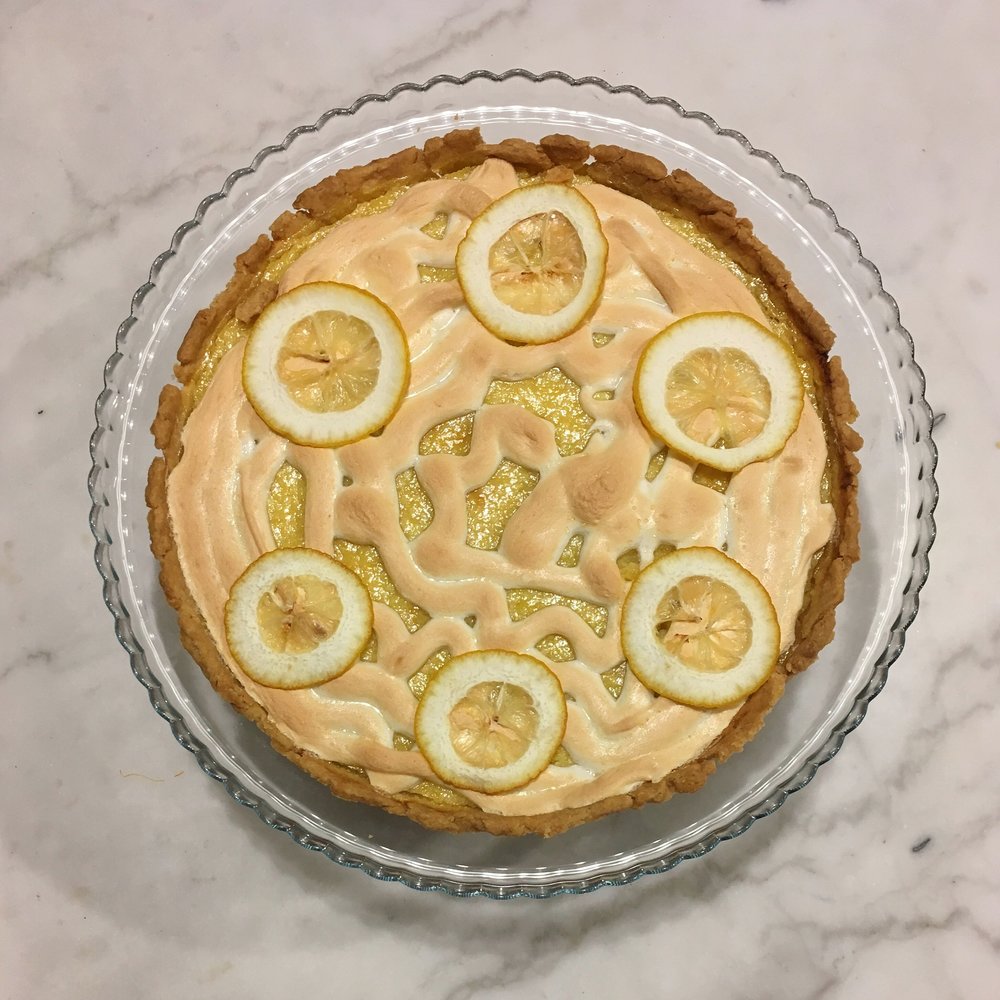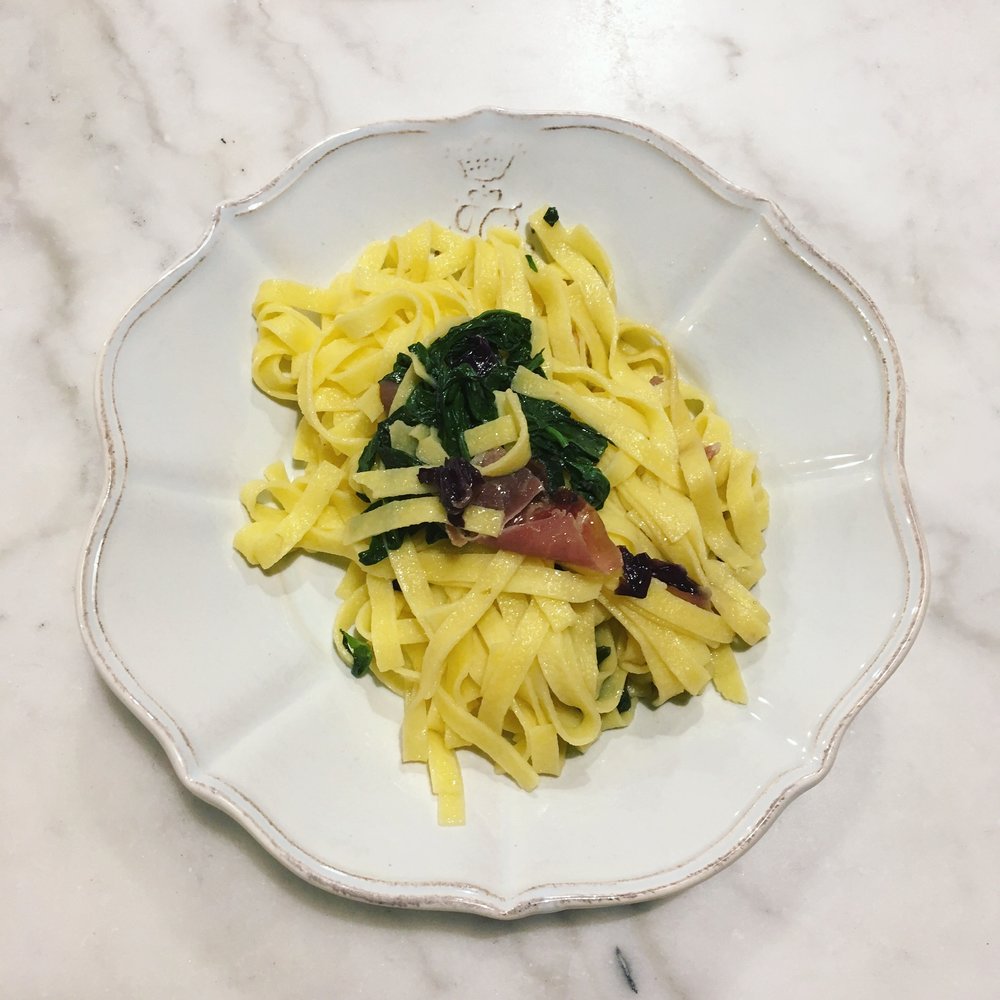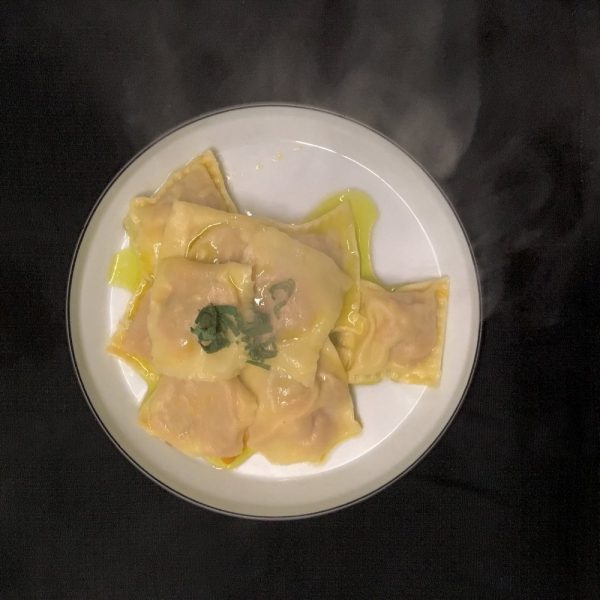I can’t help making ravioli. And even more when I have fresh ricotta. But because A. doesn’t like cheese too much I added prosciutto to the basic ricotta-basil filling. And I prepared a tomato-basil-prosciutto sauce to go with it. It was a very simple dinner to celebrate our 10th wedding anniversary enjoyed in our country house after a very intense week.

For the ravioli pasta, same recipe as usual (100g of flour, 1egg, a bit of salt and olive oil), for the filling I used a pack of fresh ricotta, 3 branches of fresh basil, a few slices of prosciutto. In a bowl mix the ricotta, the basil washed and cut, salt and pepper. After making the pasta and setting one layer in the ravioli shapes, I put a few pieces of prosciutto in each ravioli then cover with the ricotta mix. Add the second layer of pasta and finish the ravioli. Boil in a large amount of water. Fresh pasta takes only a few minutes to be ready, once they float remove and drain. Serve immediately.
For the sauce I used 2 tomatoes, 2 branches of fresh basil, a few slices of prosciutto. Wash and cut the tomatoes and the basil. In a heated frypan or a pan, add some olive oil, the tomatoes, salt and pepper, stir until most of the juice is gone. Then the basil. In the very last minute of cooking add the prosciutto, you don’t want to cook to much. Use to top the ravioli.










